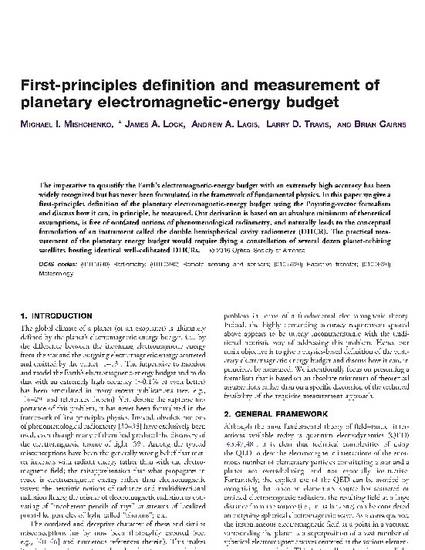
The imperative to quantify the Earths electromagnetic-energy budget with an extremely high accuracy has been widely recognized but has never been formulated in the framework of fundamental physics. In this paper we give a first-principles definition of the planetary electromagnetic-energy budget using the Poynting- vector formalism and discuss how it can, in principle, be measured. Our derivation is based on an absolute minimum of theoretical assumptions, is free of outdated notions of phenomenological radiometry, and naturally leads to the conceptual formulation of an instrument called the double hemispherical cavity radiometer (DHCR). The practical measurement of the planetary energy budget would require flying a constellation of several dozen planet-orbiting satellites hosting identical well-calibrated DHCRs.
